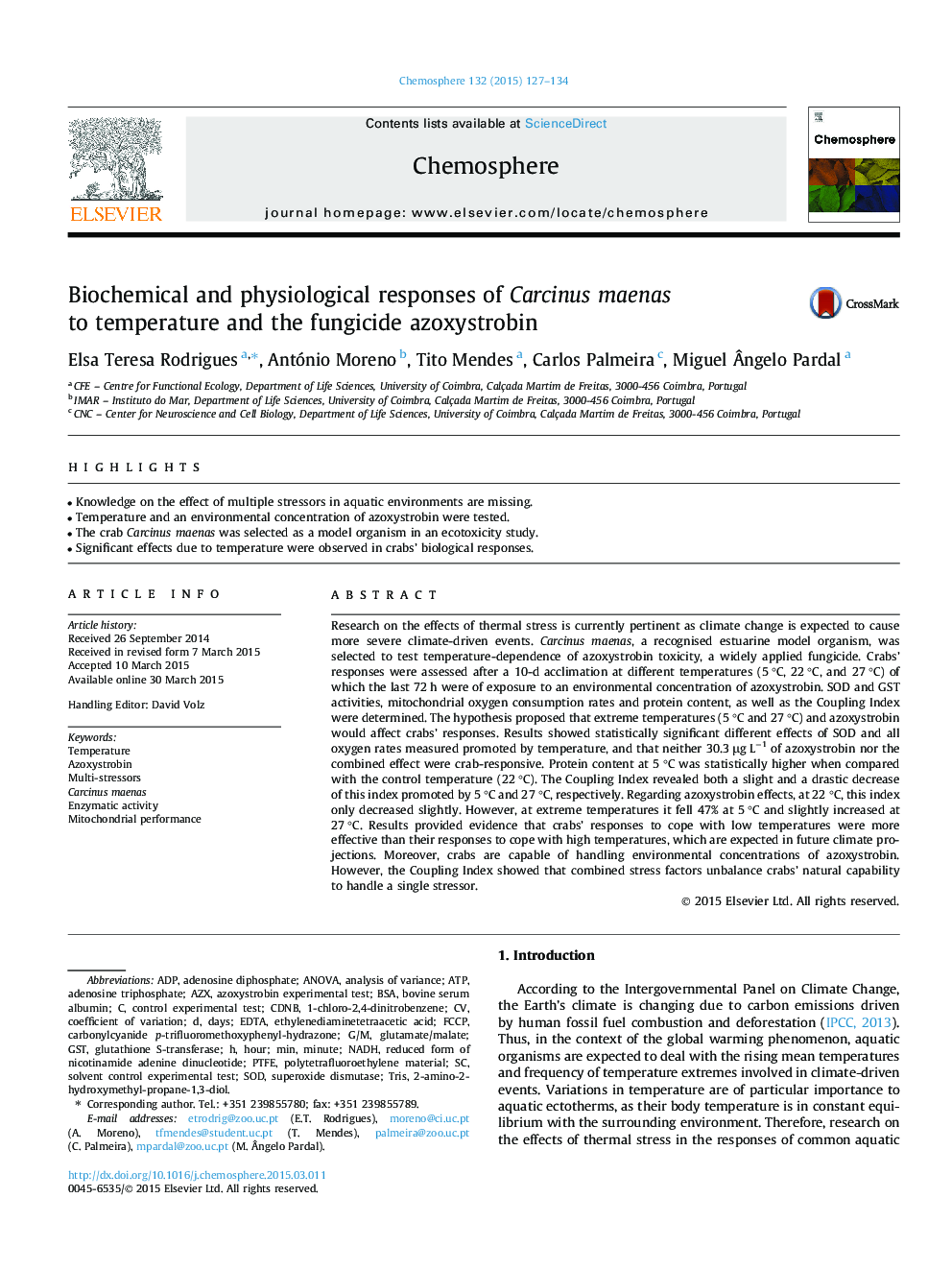| کد مقاله | کد نشریه | سال انتشار | مقاله انگلیسی | نسخه تمام متن |
|---|---|---|---|---|
| 6307951 | 1618839 | 2015 | 8 صفحه PDF | دانلود رایگان |

- Knowledge on the effect of multiple stressors in aquatic environments are missing.
- Temperature and an environmental concentration of azoxystrobin were tested.
- The crab Carcinus maenas was selected as a model organism in an ecotoxicity study.
- Significant effects due to temperature were observed in crabs' biological responses.
Research on the effects of thermal stress is currently pertinent as climate change is expected to cause more severe climate-driven events. Carcinus maenas, a recognised estuarine model organism, was selected to test temperature-dependence of azoxystrobin toxicity, a widely applied fungicide. Crabs' responses were assessed after a 10-d acclimation at different temperatures (5 °C, 22 °C, and 27 °C) of which the last 72 h were of exposure to an environmental concentration of azoxystrobin. SOD and GST activities, mitochondrial oxygen consumption rates and protein content, as well as the Coupling Index were determined. The hypothesis proposed that extreme temperatures (5 °C and 27 °C) and azoxystrobin would affect crabs' responses. Results showed statistically significant different effects of SOD and all oxygen rates measured promoted by temperature, and that neither 30.3 μg Lâ1 of azoxystrobin nor the combined effect were crab-responsive. Protein content at 5 °C was statistically higher when compared with the control temperature (22 °C). The Coupling Index revealed both a slight and a drastic decrease of this index promoted by 5 °C and 27 °C, respectively. Regarding azoxystrobin effects, at 22 °C, this index only decreased slightly. However, at extreme temperatures it fell 47% at 5 °C and slightly increased at 27 °C. Results provided evidence that crabs' responses to cope with low temperatures were more effective than their responses to cope with high temperatures, which are expected in future climate projections. Moreover, crabs are capable of handling environmental concentrations of azoxystrobin. However, the Coupling Index showed that combined stress factors unbalance crabs' natural capability to handle a single stressor.
Journal: Chemosphere - Volume 132, August 2015, Pages 127-134